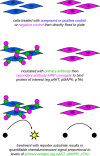Small-Molecule Trk Agonists: Where Do We Go from Here?
- PMID: 40679347
- PMCID: PMC12362621
- DOI: 10.1021/acs.jmedchem.4c02365
Small-Molecule Trk Agonists: Where Do We Go from Here?
Abstract
About two decades ago, there were no validated, agonistic small-molecule modulators of Trk (tropomyosin receptor kinase). High-throughput screening of commercial libraries seemed an attractive way to identify starting structures when the research community became aware of their potential for treatment of neurodegeneration and traumatic injuries (e.g., stroke) because this strategy avoids high-level chemical expertise for molecular design and synthesis. Cost and effort constraints arising from library acquisition and assays imposed limitations on numbers of compounds tested, so filtering to reduce library sizes before screening was routine. One of the criteria was to prioritize existing pharmaceuticals because these had known toxicity profiles and side effects, at least in some delivery and dosing regimens, and many cases had proven blood brain barrier (BBB) permeabilities. This review gives our perspective on how these efforts transpired, lessons learned, and constraints which hold back development in this area at the present time.
Figures








References
-
- Jackson, M. R. Chemical Probe Development Versus Drug Development. Phosphatase Modulators; Millán, J. L. , Ed.; Humana Press: Totowa, NJ, 2013; pp 1–6. - PubMed
Publication types
MeSH terms
Substances
Grants and funding
LinkOut - more resources
Full Text Sources

